Program planning is key to achieving success in any project. But what is program planning, and how can you make it more efficient? In this guide, we’ll walk through the essential steps of program planning and show you how Boardmix can help streamline the process. With its easy-to-use templates and visual tools, Boardmix allows you to organize and track your program with ease. Start planning your next project confidently with Boardmix today!
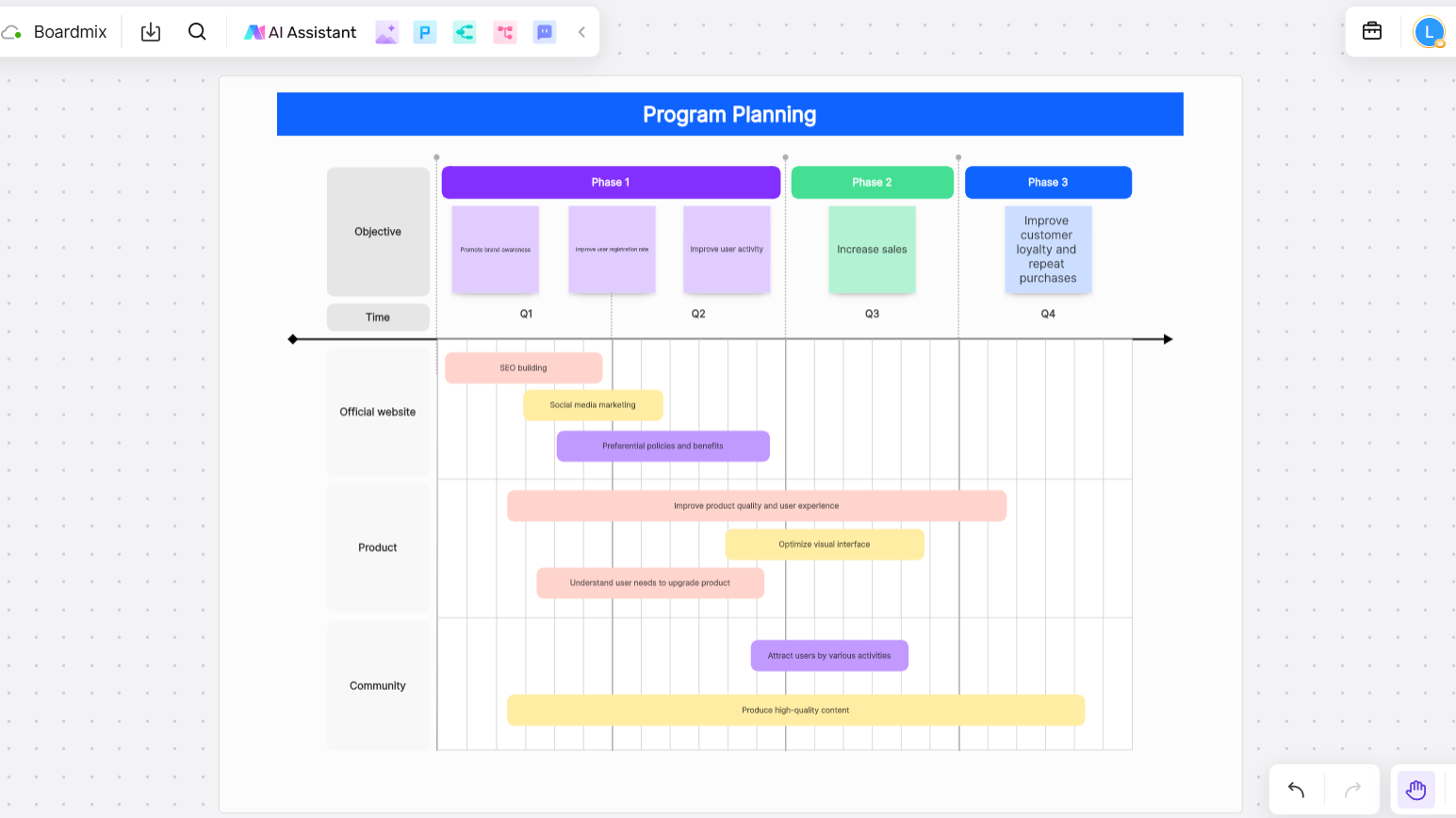
What is Program Planning?
To fully understand what program planning is, it's crucial to break it down. Program planning is the process of organizing and coordinating resources and activities to achieve specific goals. It includes defining objectives, creating a roadmap, allocating necessary resources, and evaluating progress along the way. In essence, it’s the act of turning goals into reality by setting clear milestones and deadlines.
In many cases, what is program planning refers to planning at both the macro and micro levels. For instance, in project management, program planning involves outlining the scope of work, assigning tasks, and ensuring that all aspects of the program are aligned to meet the set objectives.
Without proper program planning, projects can lose direction, resources can be mismanaged, and timelines may slip. Therefore, understanding what is program planning is essential for success in virtually any field, whether it's business, education, or healthcare.
What Are the Objectives of Program Planning?
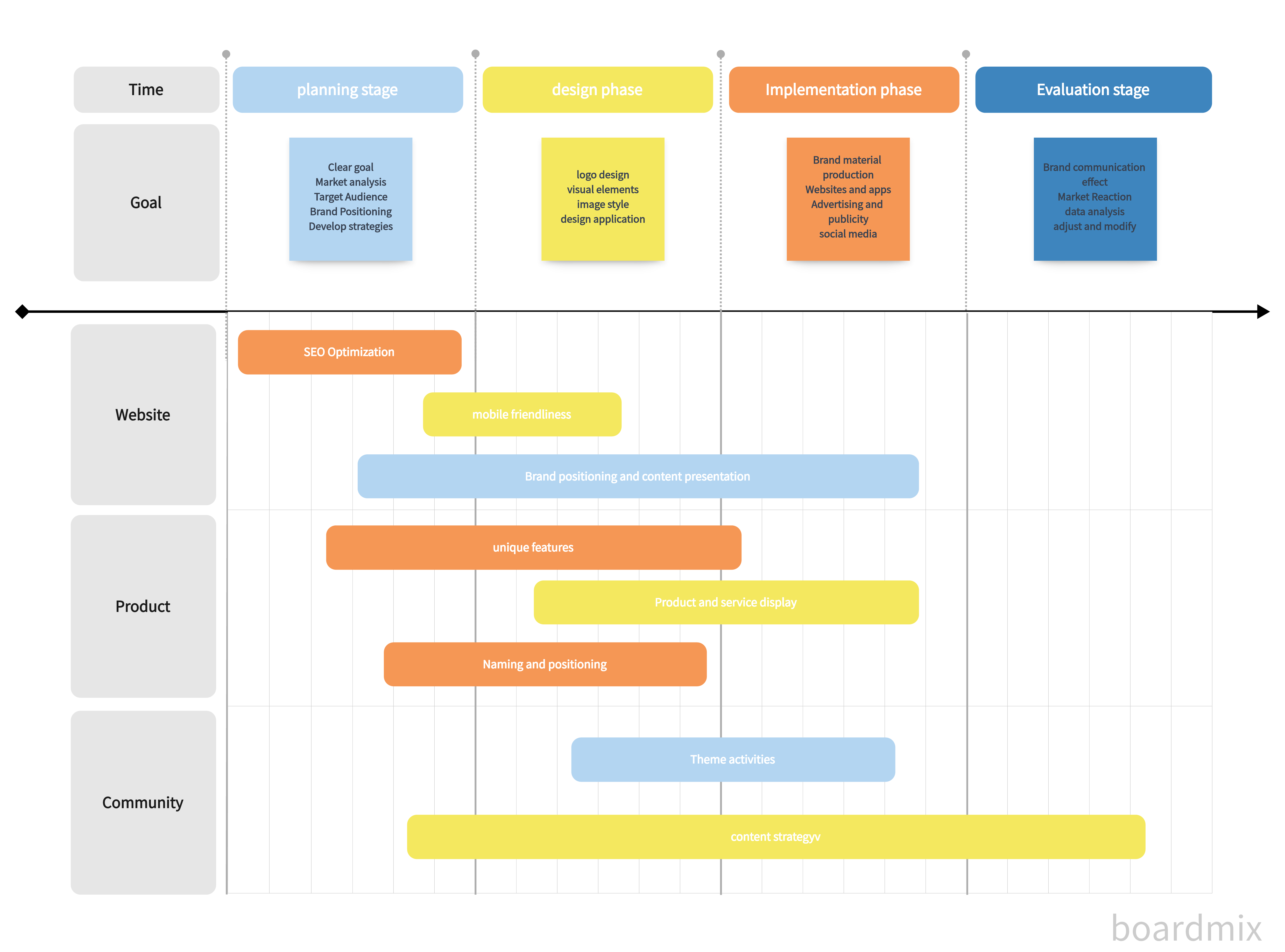
The objectives of program planning are critical to ensure that a program is successfully executed and delivers its intended outcomes. Program planning involves a series of steps and strategies that allow organizations and individuals to outline the goals, resources, and timelines required for achieving specific objectives. Below are the key objectives of program planning:
- Clarity of Purpose
One of the primary objectives of program planning is to provide clarity on the purpose of the program. It ensures that everyone involved in the program understands the goals and how these align with the broader organizational or personal mission. By defining a clear purpose at the outset, program planning provides direction and helps stakeholders stay focused on the main objectives.
- Resource Allocation
Program planning aims to ensure that the necessary resources—financial, human, and material—are allocated effectively to support the program's objectives. It involves identifying and prioritizing resource needs, ensuring that these resources are available when required, and minimizing wasteful expenditure. A clear resource plan helps avoid resource shortages or misallocations, ensuring smooth program execution.
- Risk Management
Another critical objective of program planning is to identify potential risks and devise strategies to mitigate them. Effective program planning involves assessing potential challenges or obstacles that may arise during the execution of the program. With a proper risk management strategy in place, it is easier to foresee potential issues and take proactive measures to reduce their impact on the program.
- Timeline and Milestone Management
Program planning helps in defining timelines for the completion of various tasks and milestones within the program. It helps in setting realistic deadlines and ensures that progress is being tracked at each stage. By setting clear milestones, program planning enables monitoring and evaluation of the program's progress, helping to stay on course and make adjustments as necessary.
- Coordination and Communication
Effective communication and coordination among various teams, stakeholders, and departments are key objectives of program planning. Through proper planning, program managers can ensure that all involved parties are on the same page and collaborate effectively towards achieving common goals. Clear communication helps avoid misunderstandings, delays, and conflicts, thus ensuring that the program progresses smoothly.
The Essential Steps of Program Planning
Now that we’ve established what program planning is, let’s take a closer look at the essential steps involved in this process:
- Define Objectives: Establish clear goals for the program. Knowing exactly what you want to achieve is foundational to what program planning is.
- Identify Resources: Assess the resources you will need—personnel, budget, materials, and time.
- Create an Action Plan: Break down the tasks and assign responsibilities. An action plan outlines who does what and when.
- Monitor and Evaluate: Track progress and evaluate whether the program is on track to meet its objectives.
- Adjust as Needed: Be flexible and modify your plan if circumstances change.Program planning is an iterative process.
These steps define what is program planning by ensuring that each element is considered and that resources are allocated effectively.
5 Easy-to-Follow Program Planning Templates on Boardmix
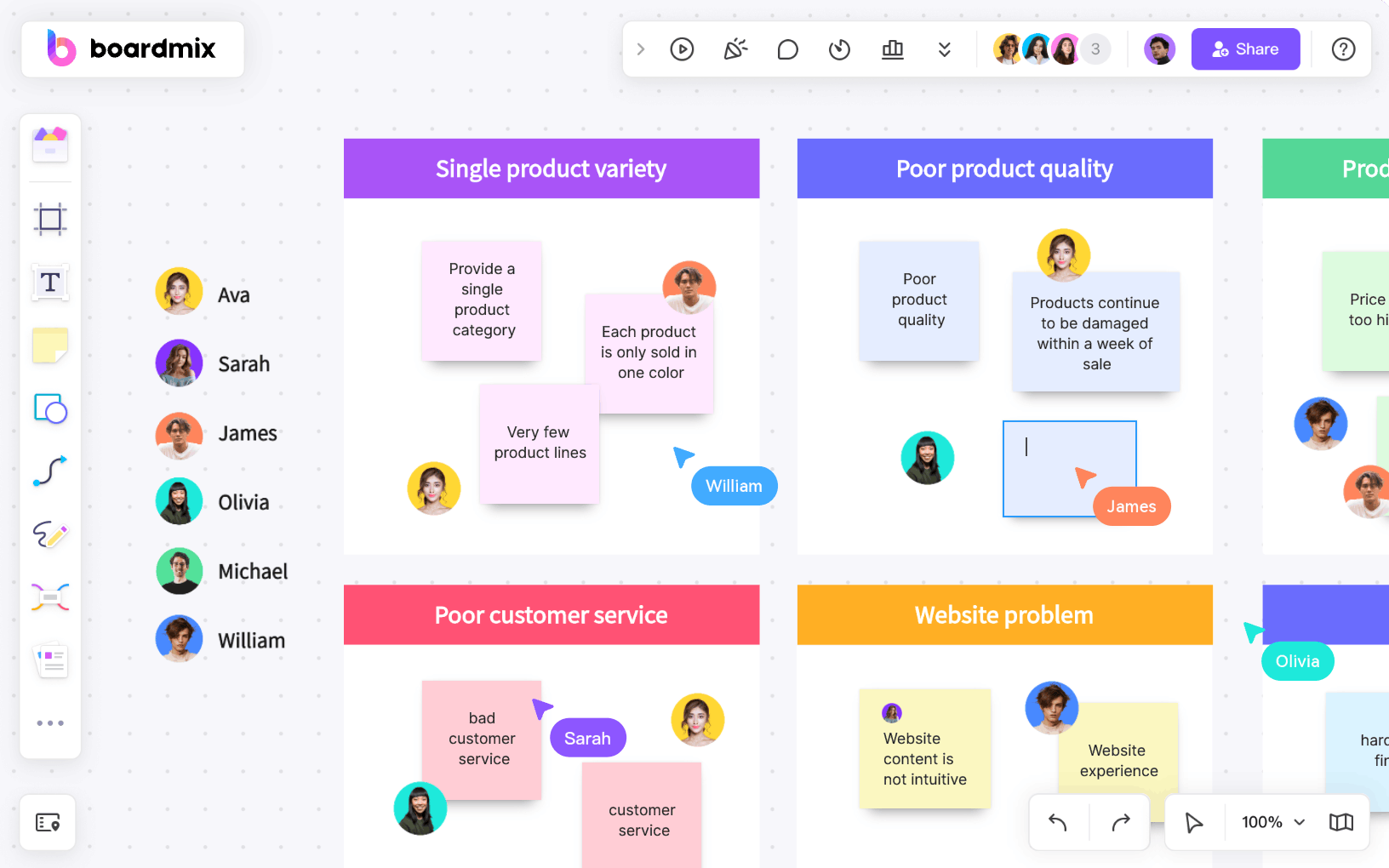
To simplify what program planning is, Boardmix offers several user-friendly templates that can help you structure your program efficiently. These templates are designed to make the process easy for anyone, whether you’re a beginner or a seasoned planner.
- Basic Template for Program Planning
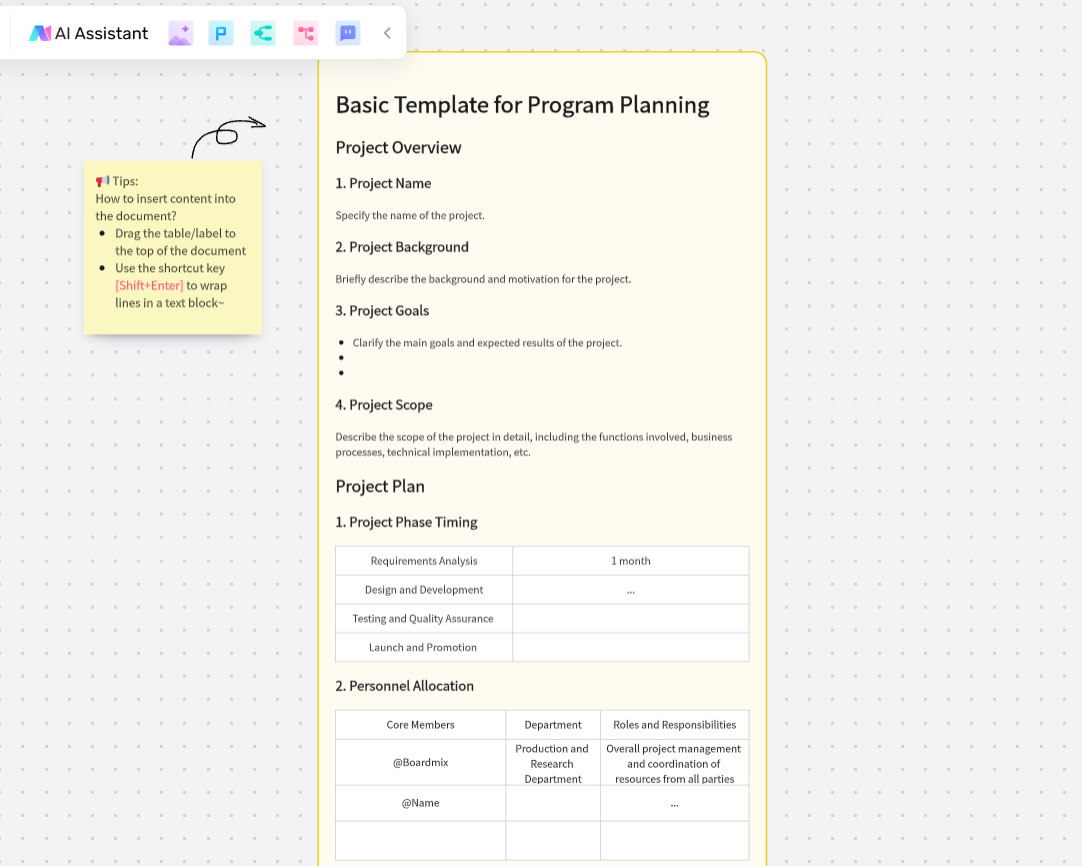
This template helps you organize objectives, tasks, and timelines in a simple format. It’s perfect for a basic understanding of what program planning is.
- Program Management Gantt Chart

A Gantt chart is a powerful tool to visualize project timelines, milestones, and dependencies. It provides a clear overview of what program planning is.
- Program Management Flowchart

This flowchart breaks down complex processes into smaller, manageable tasks, illustrating the logical flow of actions within a program. It offers a visual representation of what is program planning.
- Program Timeline Template
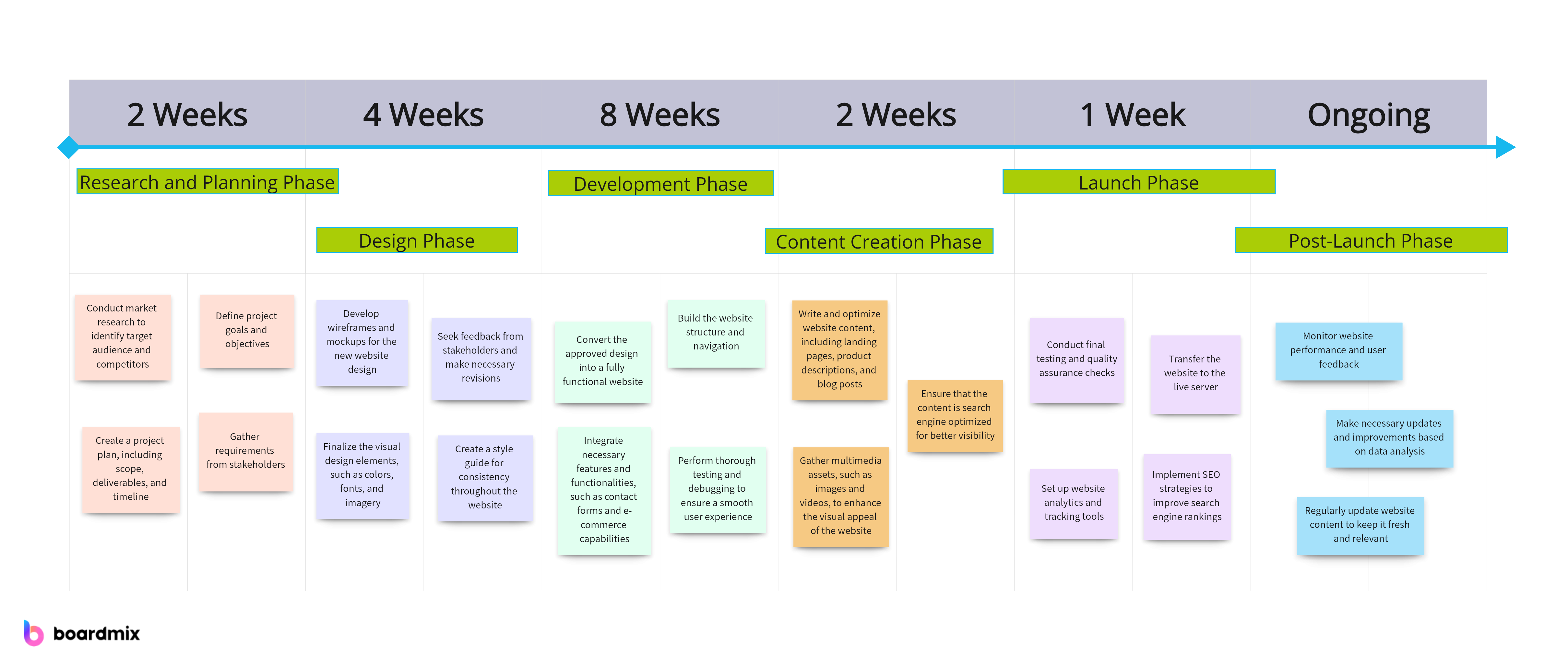
The timeline template helps visualize the sequence of tasks and their deadlines. This format helps to ensure that nothing gets overlooked in what program planning is.
- Program Schedule Template
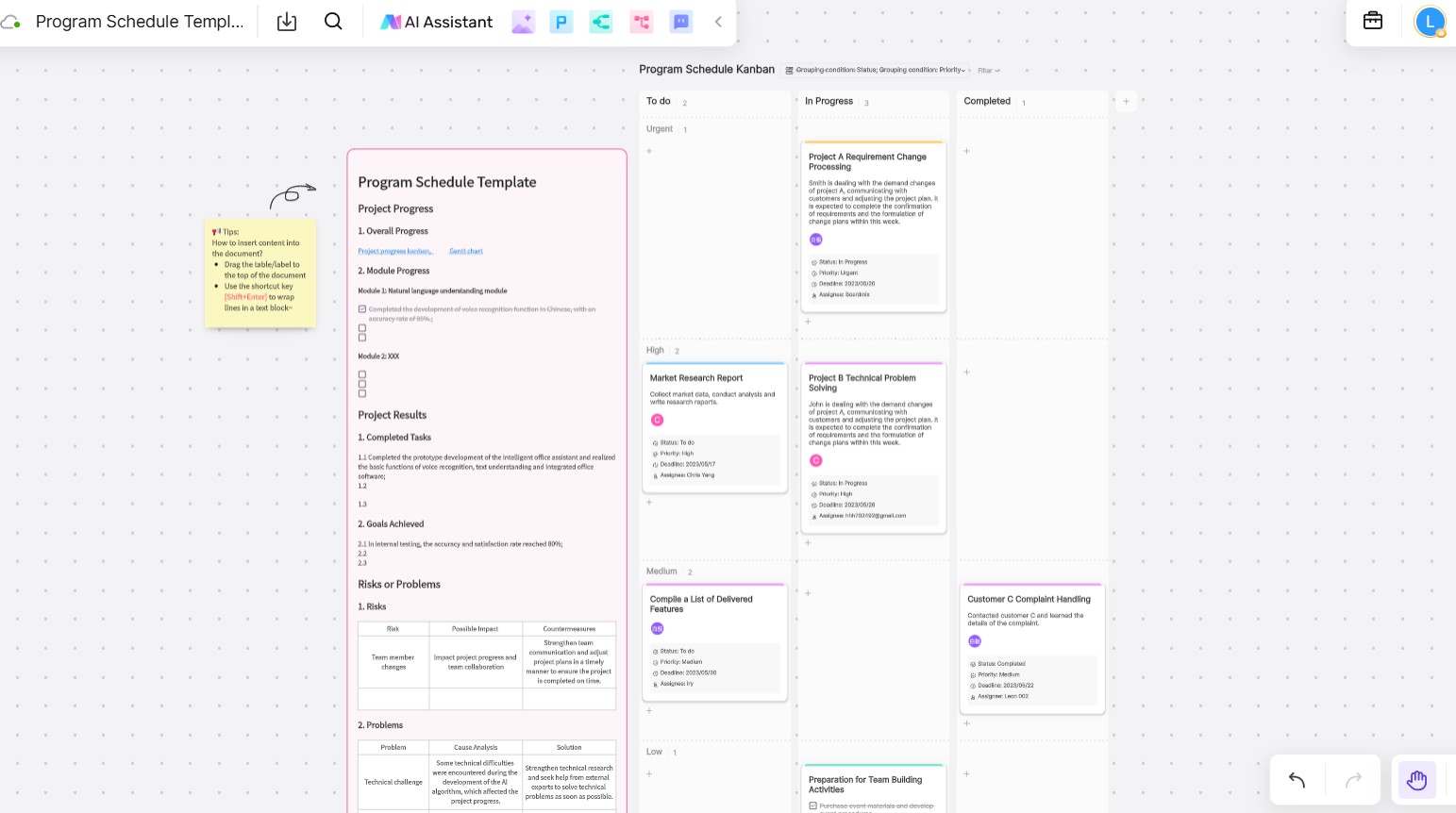
A detailed schedule template can help you track daily, weekly, or monthly activities, offering insight into the time management aspect of what program planning is.
These templates are designed to make program planning more accessible and structured. They help you gain a deeper understanding of what is program planning and apply it practically.
Actionable Strategies for Effective Program Implementation
Understanding what program planning is goes beyond just creating a plan. To successfully implement your program, you need to follow these strategies:
- Prioritize Communication
Regular updates and clear communication with all stakeholders are vital. Effective communication is a key element of what program planning is.
- Monitor Progress
Track milestones and identify any issues early. Monitoring ensures that the program stays on track, a core part of what program planning is.
- Adapt to Change
Stay flexible and adjust the plan as needed based on changing circumstances. Program planning is a dynamic process.
- Leverage Technology
Use tools like Boardmix to manage workflows, visualize progress, and maintain organization. Technology enhances what program planning is.
- Engage Your Team
Collaboration ensures everyone is aligned with the program’s objectives. Engaged teams are more likely to successfully execute what program planning is.
Final Thoughts
What is program planning is more than just a process—it’s the foundation for the success of any project. By following the key steps and using the right tools, like Boardmix, you can ensure that your program stays organized, on track, and efficient. With Boardmix’s intuitive templates and visual tools, you can simplify complex tasks and focus on achieving your goals. Start implementing your program plan today with Boardmix and set yourself up for success!














